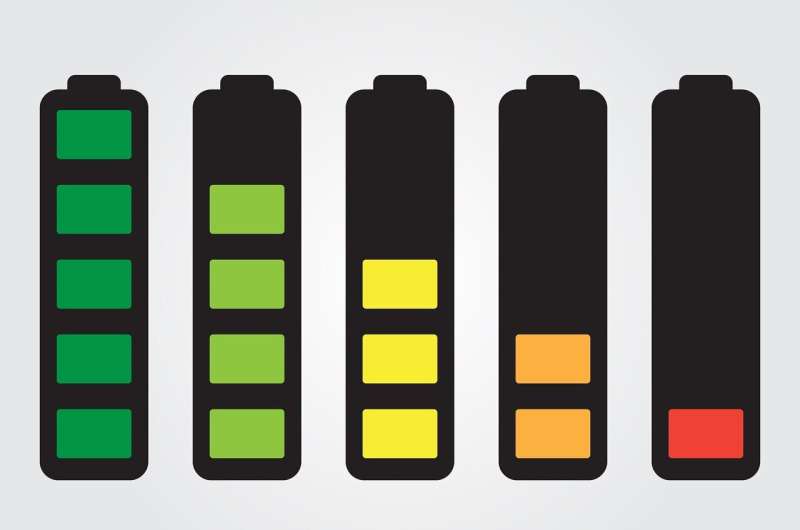Study provides keys to managing influx of EV batteries

As electric vehicle production revs up across the globe, an inherent consequence will be the mutually growing number of retired lithium-ion batteries that, unlike traditional lead-acid car batteries, are difficult to dispose of.
A new Cornell-led study identifies several keys to sustainably managing the influx, with an emphasis on battery chemistry, second-life applications and recycling.
"What to do with all these retired electric vehicle batteries is going to be a huge issue," said Fengqi You, the Roxanne E. and Michael J. Zak Professor in Energy Systems Engineering, who used advanced modeling to examine environmental and economic tradeoffs in how batteries are built, used and recycled.
The life-cycle analysis, which considered a variety of options for battery materials and technologies, is detailed in research published Nov. 5 in Science Advances.
From the very beginning of a battery's life cycle, when its raw materials are mined from the Earth, economics drive decisions about how the battery is built.
"Lithium-ion batteries are designed today for performance and not for recycling or second life," said You, noting that electric vehicle batteries typically last five to 12 years before they lose the energy capacity needed to power a vehicle. "There's very little discussion right now about these environmental dimensions of improving battery design for recycling or reuse."
One finding is that a battery's chemistry can affect its overall environmental impact. For instance, cobalt is a common battery material that, when mined, is energy-intensive and damaging to the environment. Replacing cobalt with nickel can alleviate those concerns, but most life cycle scenarios reveal there are tradeoffs.
"Cobalt's presence, even at relatively small amounts, in a battery cathode leads to a much less oxidative environment for other components, extending the lifespan of the battery and increasing options for second-life use and materials recycling," said Lynden Archer, the Joseph Silbert Dean of Engineering and co-author of the study.
But, Archer said, cobalt's expense—and association with exploitative child labor—has led the material to be "conventionally thought of as undesirable in the low-cost batteries needed for an 'electrify-everything' future."
The analysis also found that an electric vehicle battery's overall carbon footprint can be reduced by up to 17% if it can be reused before it is recycled. One choice for battery reuse is power stations that store wind and solar energy. Such energy storage is growing in demand and can make use of retired batteries with reduced energy capacity. And as the share of renewable energy contributing to the power grid grows, a reused battery's carbon footprint shrinks by around a quarter.
Most of today's recycling facilities have difficulty breaking apart heavily fortified car batteries and recovering the raw materials within. Yanqiu Tao, a doctoral student who co-authored the study, said policymakers should consider ways to incentivize recycling techniques that optimize the battery's sustainability.
"In the study we consider the commonly used graphite as the anode-active material, which is hard to recycle and emits carbon dioxide when it's combusted," Tao said. "If policymakers can promote graphite separation or emerging recycling methods, it would reduce the environmental impact."
More information: Yanqiu Tao et al, Second life and recycling: Energy and environmental sustainability perspectives for high-performance lithium-ion batteries, Science Advances (2021). DOI: 10.1126/sciadv.abi7633

















